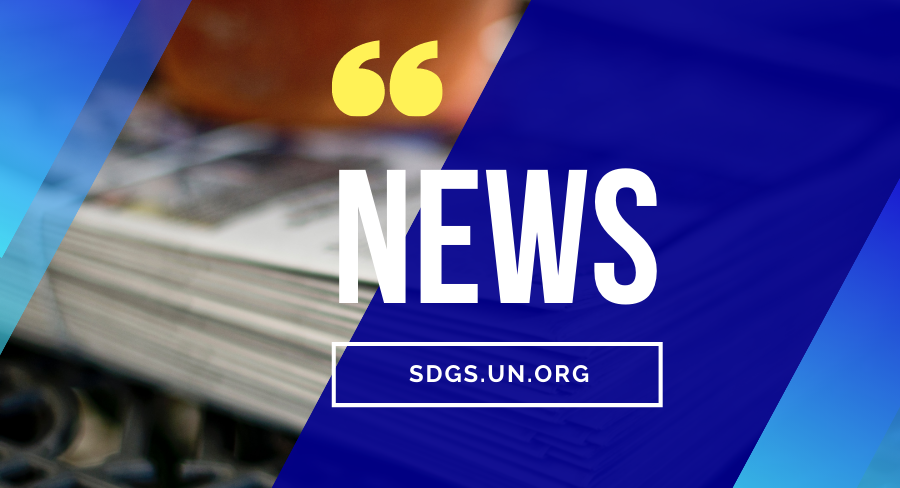News
Sustainable Blue Foods are Vital to Global Food Security

Blue foods – foods produced from the ocean and lakes and rivers – have an essential role to play in achieving food security, ending malnutrition and building healthy, nature-positive and resilient food systems. Yet they are often neglected in food discussions. It is critically important that sustainable blue food systems are fully integrated into the UN Food Systems Summit agenda and into game- changing solutions.
Why do blue foods matter?
More than 3,000 species of aquatic animals and plants are captured or cultivated for use as food. They are produced through a wide variety of systems – from ocean-going factory trawlers to small, freshwater fishponds. Blue foods are already a cornerstone of the global food system, providing a vital source of nutrition for more than 3 billion people worldwide and livelihoods for hundreds of millions. They have even greater potential.
Blue foods can play a central role in achieving the Sustainable Development Goals and the goals of the Summit – in supporting healthier, more sustainable, more equitable food systems globally and in many of the most climate-challenged and food-insecure communities.
- Access to safe and nutritious food for all: Blue foods can be a powerful tool for public health. Many blue foods are rich in essential micronutrients, such as omega-3s, zinc, iron and vitamins A, D, and B12, that can reduce infant and maternal mortality, stunting and cognitive deficits. Blue foods can also offer a healthy source of animal protein, offering lower risks of heart disease and other non-communicable diseases than some other sources. (Supporting SDGs 2 and 3).
- Boosting nature-positive and sustainable food production: Blue foods vary in their environmental footprints, but most blue food systems provide animal-source protein with relatively low greenhouse gas emissions and impacts on biodiversity. Some systems – such as aquaculture of mussels and clams – actually improve the environment in which they’re raised, filtering excess nutrients out of the water. (Supporting SDGs 12, 14, 15).
- Advancing equitable livelihoods and culture: Hundreds of millions of people derive their livelihoods from small-scale fisheries. Small-scale fisheries produce most of the fish supply for human consumption, providing a high diversity of species to support healthy diets, and offering communities resilience in the face of climate change and market fluctuations. With appropriate policies, they can offer important opportunities for women – almost half of the total workforce in small-scale fisheries are women. (Supporting SDGs 1, 5, 8, and 10).
Blue foods must be integrated into discussions and decisions about the food system
Discussions of the food system tend to center on agriculture and land, crops and livestock. That framing shunts blue foods to the margins. Game-changing opportunities are lost. A first step is to ensure that food issues are framed in terms that embrace the potential of blue foods – in terms of food production instead of agriculture, of lands and waters instead of lands, of fish and seaweed as well as livestock and crops.
The global action agenda for the food system should embrace the priorities for a sustainable blue food system that are set out in SDG 14, including to end overfishing and the harmful subsidies that drive it, to conserve and restore productive marine and coastal ecosystems, and to ensure that small-scale fishers have access to resources and markets.
Blue foods must also be integrated into the broader solutions that we take to the UN Food Systems Summit. Thus, for example, governments should:
- Integrate blue foods into food policymaking, for example in a Ministry of Food, so that they can govern the entire food system, including production, consumption and trade.
- Manage pollution from agriculture and aquaculture to sustain healthy lakes, rivers and coastal ecosystems that support blue food production.
- Build nutrition into trade policies, so that blue foods essential for domestic food security are not lost to global markets.
- Embed blue foods in policy reforms that shift production and consumption to species and technologies that have lighter footprints and to foster diversity that enhances resilience.
- Build blue foods into dietary guidelines, to help consumers take advantage of their nutritional benefits, and into social safety net programs, as a crucial source of essential micronutrients for the most vulnerable populations, such as children and pregnant women.
- Ensure that public investment in food system innovation includes investment in research to develop sustainable aquaculture for species that can provide affordable nutrition, resilience, and equitable livelihoods, and capital to allow small and medium enterprises to scale.
- Include fish food waste as a priority target in food waste reduction strategies.
Blue Food Facts
- Fish provide 3.3 billion people with almost 20 percent of their average per capita intake of animal protein, along with an array of essential micronutrients. (FAO)
- A recent analysis projected that, if marine fish catches continue to decline, more than 800 million people will face deficiencies in vital nutrients.
- Between 30 to 35% of the fish harvested is either lost or wasted
- Approximately 10-12% of the world’s population rely on blue foods for their livelihoods. (FAO) 91% of all fishers and fish workers are employed in small-scale fisheries. Half are women. (World Bank)
- In 2017, developing countries’ net revenues from export of blue foods exceeded revenues from all other agriculture commodities combined. (FAO)




